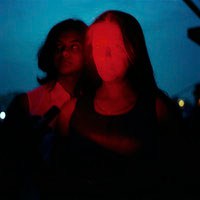Contemporary artistic production in Germany, as elsewhere, is characterized by multilayered forms of cooperation between artists from all over the world and by international intellectual and cultural exchange. Therefore, at the Venice Biennale, Germany will not be represented as a hermetic national unit but as an active participant in a complex, worldwide constellation.
For this reason Susanne Gaensheimer has invited four international artists from different countries:
- Ai Weiwei
- Romuald Karmakar
- Santu Mofokeng
- Dayanita Singh
Ai Weiwei, Romuald Karmakar, Santu Mofokeng and Dayanita Singh have been working in Germany for many years, in close cooperation with German institutions, publishing houses, and collections. Their works share a critical reconsideration of the artists’ individual respective realities and offer important trajectories for reflecting on cultural and social self- conception in a globalized world. In the process the artists use a large range of media, including photography and film in addition to sculpture and installation.
On her choice of artists Gaensheimer says:
“Both everyday life and the cultural landscape of Germany are determined by different religions, economies, and political approaches. This defines our everyday and leads to mutual enrichment as well as to confrontation. At the same time it is extremely evident that our society can no longer function without dialog, collaboration and the addressing of different philosophies and actual realities. For me, working together with a group of artists from different countries for the Venice Biennale is also a logical continuation of my work with Christoph Schlingensief.
The artists whom I invited and their works are representative of a number of issues resulting from the convergence of diverse ideologies and conceptions of life, which impact us most immediately today. In the context of the Venice-project it is important to me that these artists manage to expand our perspectives and give us access to the view of the other, sometimes in an uncomfortable way. Although they develop their works out of specific, local contexts, they establish a kind of universal visual language by integrating their individual experiences of internationality.”


